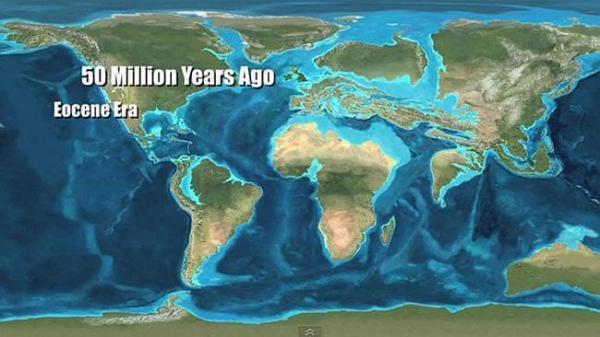Azolla fern: A climate change cure?

Earth, 50 million years ago ... A world beginning to flourish under the influence of a little fern called Azolla, which pulled much of the greenhouse gas CO2 out of the atmosphere.
FIFTY million years ago the Earth was in a dire state. Overheated by runaway greenhouse gases, the future of life seemed bleak. But a little green fern saved the day. Can it do it again?
Behind the shift which created the balmy climate of the past few million years was a geological coincidence: The isolation of the Arctic Ocean.
At this critical point in history, the newly enclosed sea became a shallow, tepid, salty and nutrient-rich lake. It spawned the future of our world.
Scientific American reports it was these conditions that proved ideal for a small algae-like fern to flourish. That plant changed our atmosphere.
Now scientists and amateurs around the world are racing to find if this little fern can do it again: And fast.
News_Rich_Media: Arctic Warming Twice As Fast As Rest Of Planet
“This plant is so incredible at every level,” biologist Jonathan Bujak told Scientific American. “I wouldn’t be surprised by just about anything we found out it was capable of.”
Called Azolla, many parts of the world regard it to be a weed. Then, as now, it blooms rapidly in the same way as algae.
Fifty million years ago, this happened on an enormous scale. The little green plant quickly formed a thick-green carpet covering the entire enclosed Arctic Ocean. Nitrogen — and carbon dioxide — were its primary food.
As it changed the weather, rains returned. These rains, in turn, helped spread the little fern over the hard-baked continents.
The plant bloomed — and died. Bloomed, and died. Each time depositing a thick layer of sediment. This carbon-laden soil was first discovered under the Arctic Ocean seabed in 2004.
Since then scientists have been trying to determine the true power of this little plant.
Now they know: In the course of one million years, it pulled out almost half of the carbon dioxide in the atmosphere.
And it’s even edible.
Massive Azolla blooms on the scale of nations are believed to have triggered the climate change that created the frozen North Pole as we know it. This ice waste itself went on to bring about even further drops in the level of CO2 by freezing it out of the air and locking it away in deposits known as permafrost.
“What’s really incomprehensible,” Bujak said, “is that the previous process of our planet cooling and CO2 dropping took 50 million years to unfold. Now, we may be reversing this process in a matter of centuries.”
Can it do it again?
If it had continent-spanning ponds — and a million years.
China has funded a project to map the genome of Azolla and hope to have results within a year.
“This knowledge will give us control over Azolla in a way we didn’t have before,” said Francisco Carrapico at the University of Lisbon. “We can increase carbon sequestering and nitrogen fixation, or give Azolla’s properties to other plants. We’ve even found chemicals in Azolla that stop cell division. The question is almost what will we find that Azolla cannot do.”
Оставить комментарий
Для комментирования необходимо войти через ![]() Вконтакте
Вконтакте
